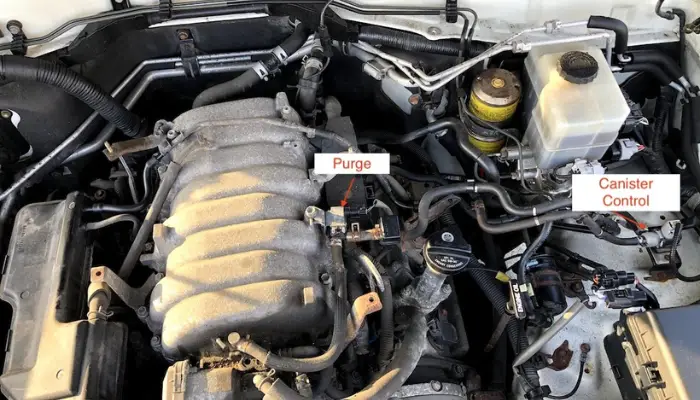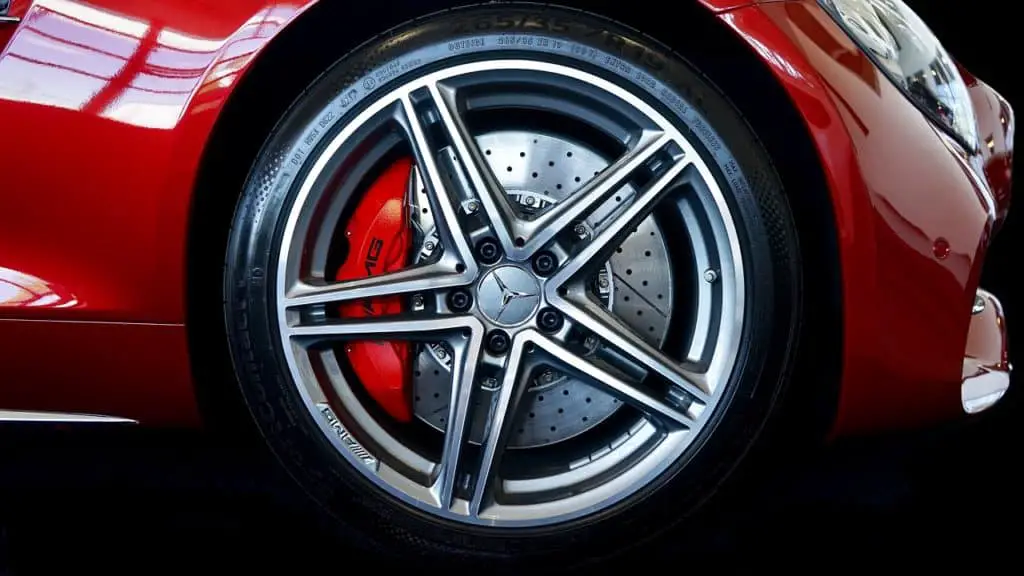- How to Clean Car Carpets Quickly (Without An Extractor) - July 10, 2024
- Can You Touch Up Clear Coat On A Car? Yes and No (Here’s Why) - November 25, 2023
- How To Wax A Car By Hand (For Beginners) - November 14, 2023
Last Updated on January 21, 2025 by Nate Schnell
Bypassing an EVAP purge valve, also known as a purge control valve (PCV) or charcoal canister purge valve, might seem complicated, but it’s a relatively simple procedure when done correctly. This guide will walk you through the steps to bypass the purge valve, explain its function within the EVAP emission control system, and explore the potential outcomes of bypassing the valve. Additionally, we’ll cover common issues, symptoms of a faulty purge valve, and specific scenarios where bypassing might be necessary.
Steps to Bypass a Purge Valve
Bypassing the purge valve involves disconnecting it from the system while ensuring there are no vacuum leaks. Here’s how to do it:
- Locate the EVAP canister and intake manifold. The EVAP canister is typically near the fuel tank or engine bay, while the intake manifold is connected to the engine.
- Identify the vacuum lines attached to the canister. You’ll usually find two vacuum ports: one on top and one on the bottom.
- Remove the purge valve. Use a socket or wrench to detach the valve. Sometimes, unplugging an electrical connector is sufficient.
- Plug the vacuum hoses. Securely block the vacuum hoses to prevent leaks. Ensure you don’t miss the secondary vacuum line typically found under the EVAP canister.
While this bypass can serve as a temporary fix, it’s essential to understand the long-term implications, as it may lead to running issues or emission system failures.
What Does an EVAP Purge Valve Do?
The EVAP purge valve is a critical component of the evaporative emission control system (EVAP). It uses engine vacuum to control the flow of fuel vapors from the charcoal canister to the intake manifold. These vapors are then burned during combustion, reducing harmful emissions.
This system prevents raw fuel fumes from being released into the environment and improves overall fuel efficiency. A functioning purge valve ensures a balanced air-fuel ratio, contributing to smoother engine performance and compliance with emission standards.
Issues After Bypassing a Purge Valve
Bypassing the purge valve may resolve specific immediate concerns, but it can introduce other problems, including:
- A rich running condition, where too much fuel is present in the combustion chamber.
- Hard starts and rough idling due to disrupted air-fuel ratios.
- Misfires caused by incomplete combustion cycles.
- Check engine lights triggered by emission system errors.
- Failed emissions tests due to unregulated fuel vapor emissions.
- Vacuum leaks, which can cause engine performance issues.
These potential issues highlight why bypassing the valve should only be considered as a short-term solution.
Common Causes of Purge Valve Failure
Several factors can contribute to a purge valve malfunction:
- Environmental Exposure: Prolonged exposure to extreme heat or cold can accelerate wear and tear.
- Low-Quality Fuel: Fuels with high carbon content can leave deposits on the purge valve and charcoal canister, impairing their function.
- Time and Degradation: Like any mechanical component, purge valves degrade with age, leading to eventual failure.
Symptoms of a Faulty Purge Valve
A failing purge valve typically triggers several noticeable symptoms. These include:
- Illuminated Check Engine Light: The engine control module monitors the valve’s performance and will signal an error if the valve fails.
- Failed Emissions Test: Excessive fuel vapor emissions will prevent your car from passing regulatory tests.
- Reduced Fuel Economy: A malfunctioning valve disrupts the flow of fuel, leading to inefficient combustion.
- Difficulty Starting or Rough Idling: Improper air-fuel ratios can cause hard starts and unstable idling.
- Reduced Engine Performance: Misfires and sluggish acceleration often accompany a faulty valve.
- Excess Fuel Vapor Smells: Strong odors of raw fuel may indicate vapor leaks in the system.
What Happens When the Purge Valve is Stuck Open or Closed?
- Stuck Open: When the valve is stuck in an open position, fuel vapors flow uncontrollably, causing a rich air-fuel mixture. This leads to poor fuel efficiency, excessive vapor smells, and potential damage to the charcoal canister.
- Stuck Closed: A closed valve prevents the recycling of fuel vapors into the engine, causing hard starts, rough idling, and increased vapor buildup within the EVAP canister.
Understanding the EVAP System Components
To grasp the importance of the purge valve, it helps to understand its role within the EVAP system:
- Engine Air Intake Manifold: This pulls air and recycled fuel vapors into the combustion chamber for efficient burning.
- Fuel Tank: It stores fuel and channels vapors to the EVAP canister for collection.
- Gas Tank Cap: The cap maintains the system’s vacuum, ensuring proper fuel and vapor flow.
- EVAP Canister: Filled with charcoal, this component stores excess fuel vapors before they’re sent to the intake manifold.
- Purge Valve: This regulates the release of stored vapors into the intake manifold for combustion.
Can You Drive After Bypassing the Purge Valve?
Driving after bypassing the purge valve is possible but not recommended for extended periods. Monitor for signs of fuel vapor leaks, such as a strong fuel odor. Prolonged use without the valve can lead to collapsed fuel tanks due to unregulated pressure and eventual system failure.
Final Thoughts on Purge Valve Bypass
Bypassing a purge valve may provide a temporary solution to specific problems, but it’s not a long-term fix. Understanding how the EVAP system works and addressing the root cause of valve failure is essential for maintaining your car’s performance and meeting emission standards. If in doubt, consult a professional mechanic to ensure your vehicle operates safely and efficiently.



